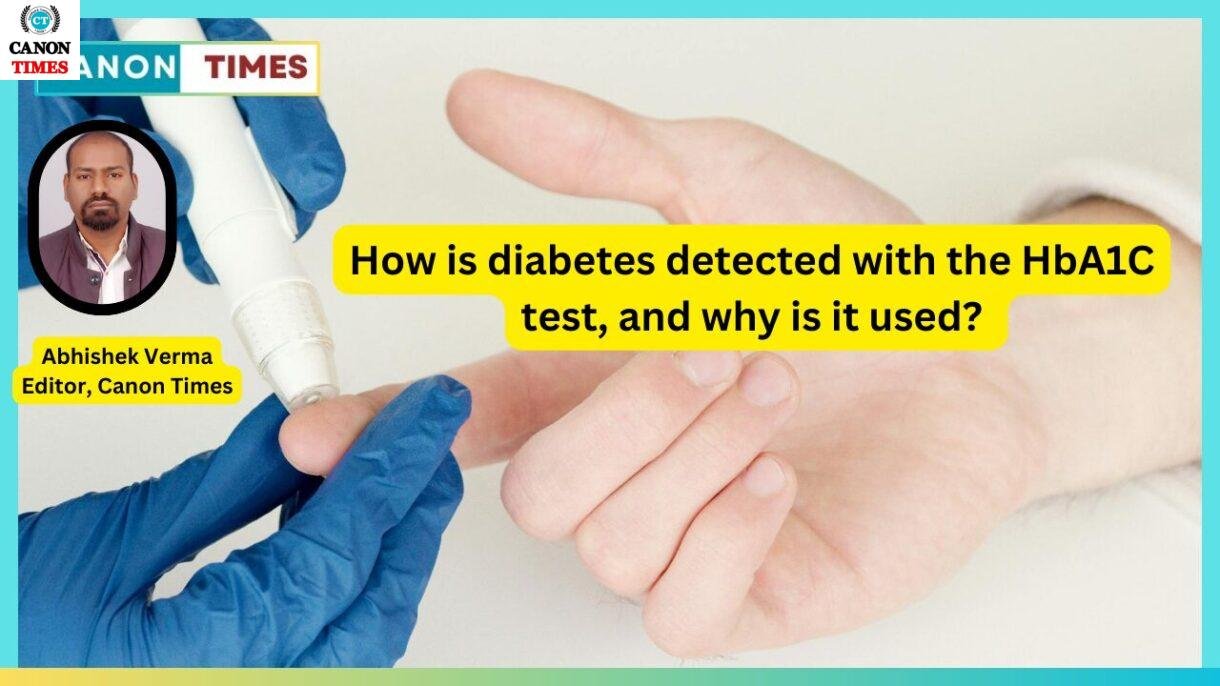The Guidelines for Management of Type 2 Diabetes, 2018 published by the Indian Council of Medical Research recommend that everyone over 30 should be checked for the disease. HbA1c was accepted as a diagnostic tool for the same in 2009 by the American Diabetes Association.
According to a countrywide survey released in 2023, there are an estimated 10.13 crore diabetics and 13.6 crore pre-diabetics in India. Apart from this, about 40% of Indians suffer from abdominal obesity and over 35% from hypertension, both of which are risk factors for diabetes. In the world, 17% of diabetes sufferers reside in India.
Experts argue that the best ways to reduce the burden of non-communicable diseases are through early identification and prevention. The haemoglobin A1C (HbA1C) test, usually referred to as the glycated haemoglobin or glycosylated haemoglobin test, is one of the most widely used tests to detect pre-diabetes, diabetes (both type 1 and type 2), and to assist manage diabetes.

What is the procedure for the test?
Food you consume releases sugar into your circulation. Your red blood cells’ haemoglobin is joined by the sugar, or glucose. A protein called haemoglobin carries oxygen to every cell in your body. Each and every person has some sugar linked to their haemoglobin. However, those who have diabetes and pre-diabetes have more. The amount of sugar-coated haemoglobin in your red blood cells is determined by the HbA1C test.
For what reason is the test meant to detect diabetes?
The Cleveland Clinic Journal of Medicine released a study in 2016 titled “The role of haemoglobin A1c in the assessment of diabetes and cardiovascular risk.” The statement read, “Although HbA1c was initially identified in 1955, high values in diabetic patients were not observed until 1968. It took eight more years for the HbA1c test to be linked to blood glucose levels in diabetic hospital patients and to be recommended as a glycemia monitoring tool.
According to the report, there were irregularities in HbA1c measurements during the initial years of therapeutic usage. However, the necessity to minimise measurement error margins became clear as the significance of accurate HbA1c readings was highlighted by studies showing that lower average HbA1c values were related with improved patient outcomes and death.
According to the report, standardisation and accuracy of HBA1c measures significantly increased between 1993 and 2012 as a result of initiatives to control measurements and calibrate them to reference standards.
HbA1c was accepted as a diagnostic tool by the American Diabetes Association in 2009. The World Health Organisation (WHO) stated in 2011 that HbA1c could be used as a diabetes diagnostic test “provided… strict quality assurance tests are in place and assays are standardised to criteria aligned to the international reference values, and there are no conditions present which preclude its accurate measurement.” This statement followed an expert consultation with the WHO.
How do the results of a HbA1C test look?
There are two ways to view the HbA1C levels: as a percentage or as millimoles per mole, or mmol/mol. A common unit of measurement for chemical compounds is the mole. Your blood glucose levels are higher the higher the proportion.
A Hb1A1C of less than 5.7% is regarded as normal; 5.7% to 6.4% may suggest pre-diabetes; and 6.5% and above may suggest diabetes. Under 42 mmol/mol is equivalent to less than 6.0%, 42–47 mmol/mol to 6.0 to 6.4%, and 48 mmol/mol to 6.5% or above.
The results of the test, however, could differ if a patient has certain medical conditions, such as kidney or liver failure, severe anaemia, thalassemia, or a blood disorder; if they are taking certain medications, such as steroids, opiates, or dapsone (a drug used to treat leprosy); or if they have a less common type of haemoglobin, which is found in some populations.
In cases of early or late pregnancy, they could even alter.
Doctors typically set certain HbA1C values as a target for patients whose findings suggest pre-diabetes or diabetes. However, these differ from person to person and are also influenced by their age, health, medicines, and other variables.
And when does someone have to take the test?
Diabetes screening should be performed on every person over the age of thirty, under the Indian Council of Medical Research’s Guidelines for Management of Type 2 Diabetes (2018). Individuals with one or more risk factors should be evaluated sooner, such as obesity, a larger waist circumference, a history of hypertension, current treatment for the condition, a history of heart disease, or a history of polycystic ovarian syndrome. If a person has a normal glucose tolerance, they should retest three years later. Retests should be conducted annually if an individual is pre-diabetic. If you are, for example, contemplating a pregnancy, your doctor could also recommend more regular testing.
In order to monitor your blood sugar levels and determine if your treatment plan is effective, your doctor may ask you to take your medication every three to six months if you have diabetes.
What distinguishes this test from others?
The HbA1C test reflects your average blood glucose levels over the previous two to three months, whereas fasting and post-prandial (after a meal) or post-meal blood sugar tests tell you blood sugar levels within a certain time range.
Furthermore, the HbA1C test is more trustworthy since it is not affected by the items in a person’s most recent meal or the time since it was last consumed, unlike traditional blood sugar tests, which might fluctuate based on these factors. It can be taken regardless of when the most recent meal was eaten.
Which constraints apply to the test?
Notably, the HbA1C test may be used in conjunction with other tests to screen for diabetes and pre-diabetes. It should be noted that it is not a substitute for other tests. One such test is the standard blood sugar test. Moreover, the HbA1C test may not detect fluctuations in blood sugar levels during the day or night, thus it does not substitute routine blood sugar monitoring at home, which a doctor may have advised.
All things considered, the HbA1C test is still among the best for evaluating the long-term management of diabetes in individuals who are known to have the disease, but its relatively low sensitivity—which results from issues with assay standardization—means that not all international medical bodies accept it as a diagnostic tool equally. Stated differently, a physician can suggest a glucose test in addition to a HbA1C test to provide a more comprehensive diagnosis. There could be restrictions specific to India with this test. Accurate measurements can be more difficult to take in specific clinical settings, according to a 2013 study that was published in the journal Diabetes Technology and Therapeutics.
These include the prevalence of structural haemoglobin variations in the population, iron-deficiency anaemia (which is comparatively common in India), thalassemia, and the usage of certain medications.
“It is imperative to consider these conditions when assessing an unsuitably high or low HbA1c level, given their relatively common occurrence in certain regions of India.”
In these situations, it could be necessary to evaluate glycemic control using other indices, the study stated.
Abhishek Verma
Author: This news is edited by: Abhishek Verma, (Editor, CANON TIMES)
Authentic news.






